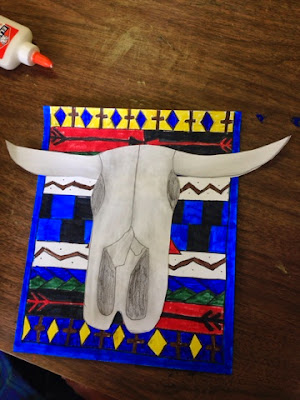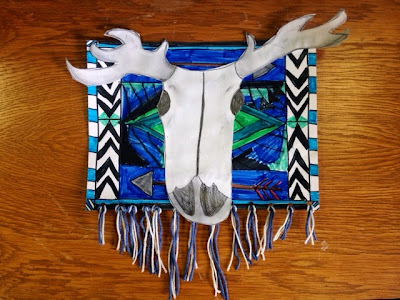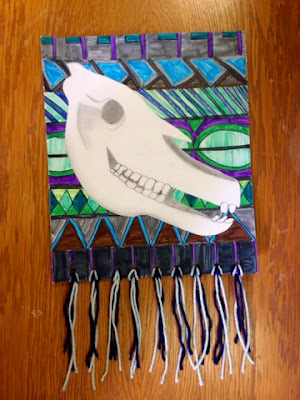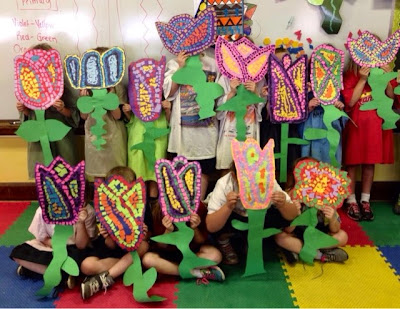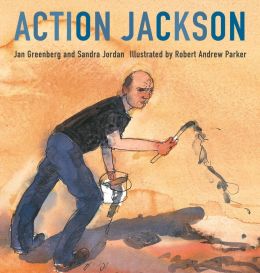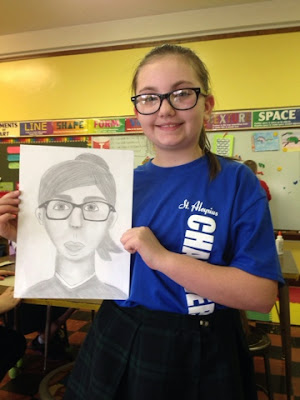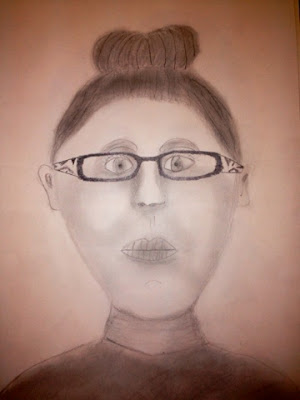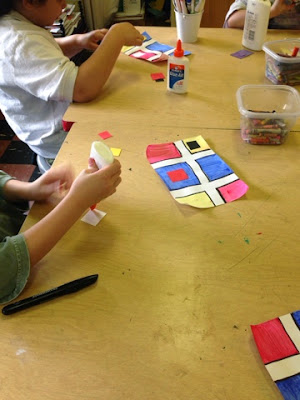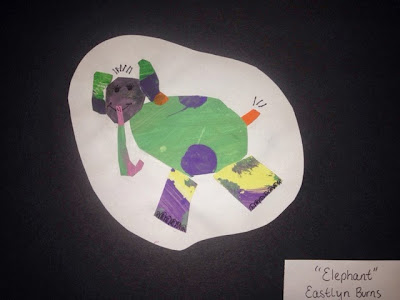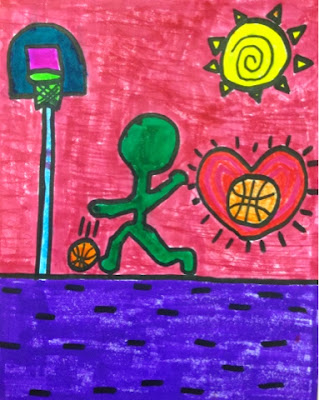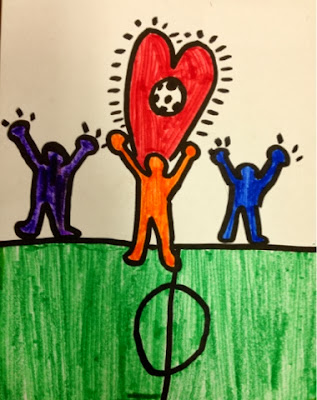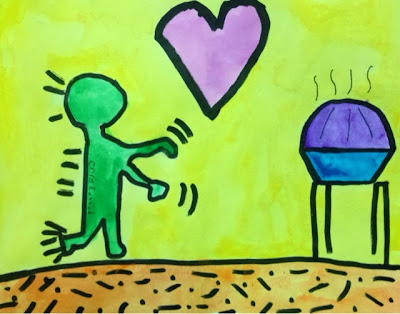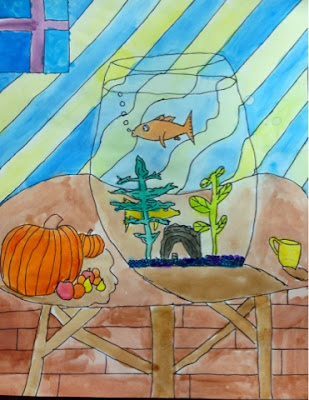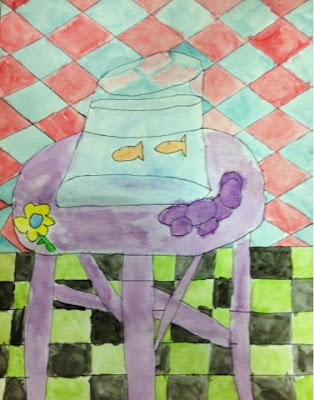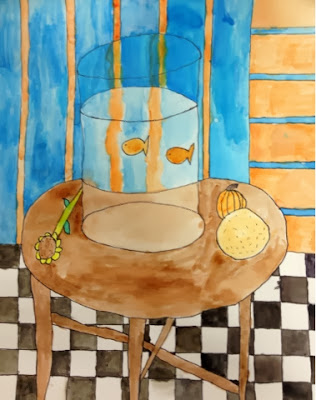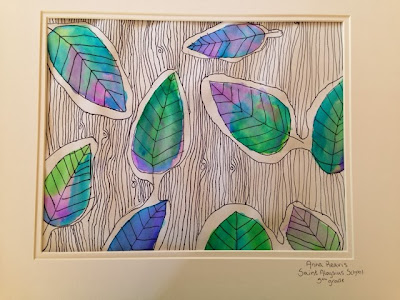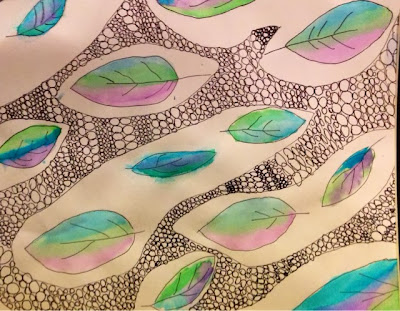- We discussed the weaving process, shapes, symbols, and colors most common in the art, as well as the uses for the blankets. Students viewed many examples of authentic weavings.
- Students then designed their own blankets with pencil and rulers. They then outlined their pencil lines with sharpie. This took us about 2 art periods.
- Next, students colored them in with good old Crayola markers. This took us another 2-3 art periods.
- Finally, we talked about Georgia O'Keefe and her bone drawings. A great book to go along with this unit is Georgia's Bones by Jen Bryant.
- Students then looked at pictures of different animal skulls (cow, horse, deer, and other animals that might be found in New Mexico) and did their best to draw their own skull on white paper. We discussed the elements of Line, shape, and especially value during this portion. We used a Kleenex to "blend" the values.
- We finished up by cutting out the drawing and gluing it in the center of the blanket. I had the students punch holes and use yarn to add fringes to the bottom of the blanket.
Check out some of the examples below!
Now all the kids want to do is an actual weaving. I promised we would get around to it next year.
